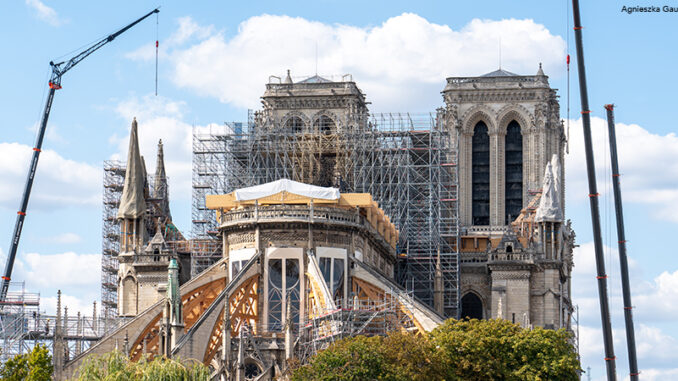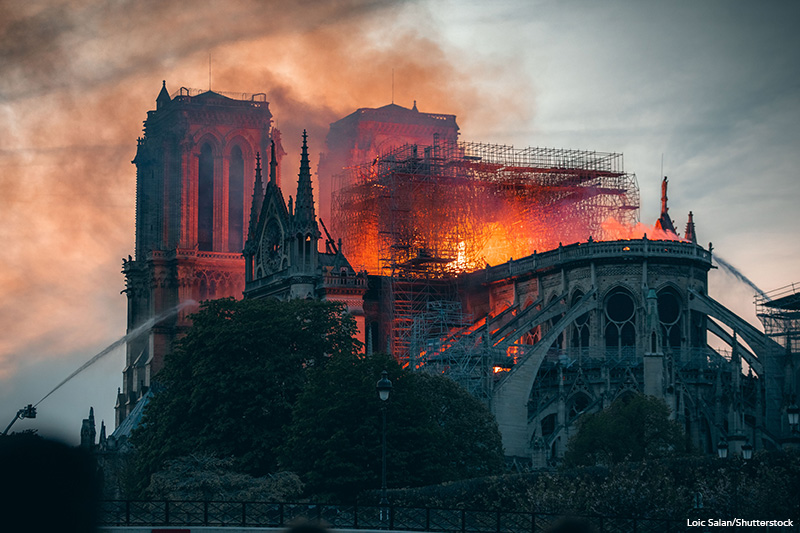
A team of designers is turning to their history books to figure out the best way to rebuild the roof of Notre Dame Cathedral in Paris, France. The building caught fire in 2019. A French group called Carpenters Without Borders has argued that the medieval cathedral should be repaired and restored using medieval materials and methods. The experimental archaeology techniques the designers are considering date all the way back to the twelfth century.
A Global Response
Notre Dame is a medieval Catholic cathedral and a UNESCO World Heritage Site. Around twelve million people per year visit this Paris landmark. In April 2019, it caught fire. About two-thirds of the roof was lost, and the spire on the roof collapsed. But the interior of the cathedral itself remained structurally sound. Private and corporate donors from all over the world have donated a total of about $950 million to save the cathedral. It took two years to clean up the debris and stabilize the cathedral structure before reconstruction could begin. Last fall, it was announced that the “Safety Phase” had been completed and that the cathedral was finally ready to be restored.
An Old Approach
Experimental archaeology is the process of recreating ancient artifacts by using only the tools, materials, and techniques available at the time they were originally created. The emphasis is on complete authenticity. To re-create an artifact in this way, experimental archaeologists must first look at old manuscripts and illustrations and consult with experts on the era. They then use teams of volunteers, students, and others to help rebuild the item, being careful to only use what was available at that time. For example, a wooden structure might be held together with wooden pegs rather than nails, and paint must be handmade using the materials and colors of the era.
Rebuilding an Icon
The exact methods for rebuilding the cathedral are still under consideration. In order to show how effective experimental archaeology could be, Carpenters Without Borders reconstructed a truss. The truss is one of the roof’s support structures. It was rebuilt using techniques that closely match those available when it was originally built in 1163. Carpenters Without Borders used simple tools to transform tree trunks into a truss weighing four tons and standing 36 feet tall. It has been displayed in the National Building Museum in Washington, D.C., and the Millennium Gate Museum in Atlanta, Georgia.
The goal is to finish rebuilding the cathedral by the spring of 2024, in time for the 2024 Summer Olympics in Paris. The church hopes to host a full-service mass on April 16, 2024.

